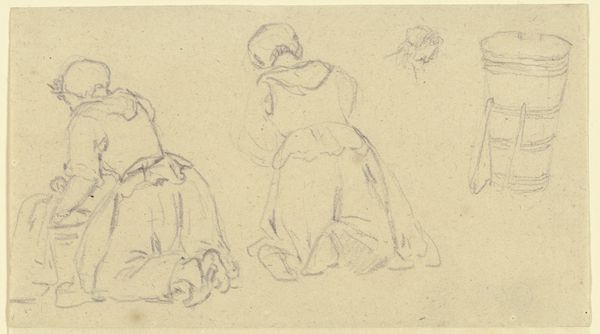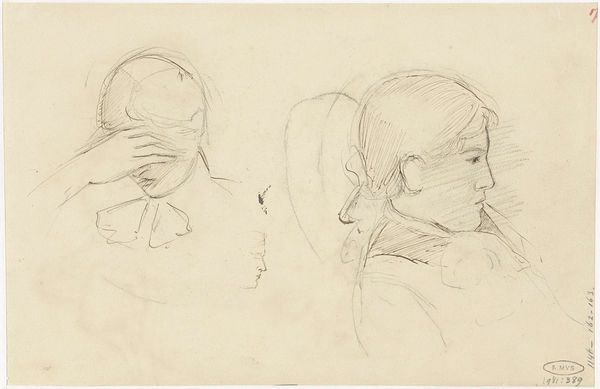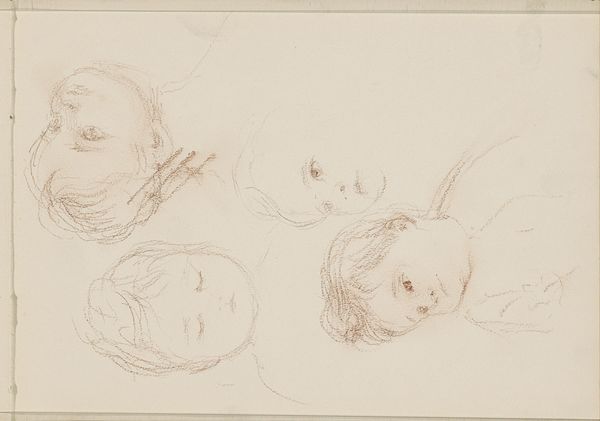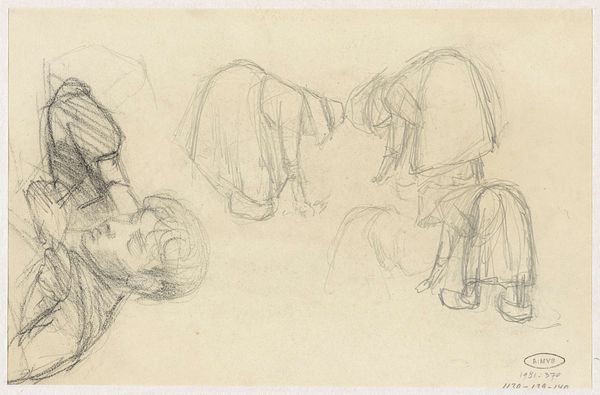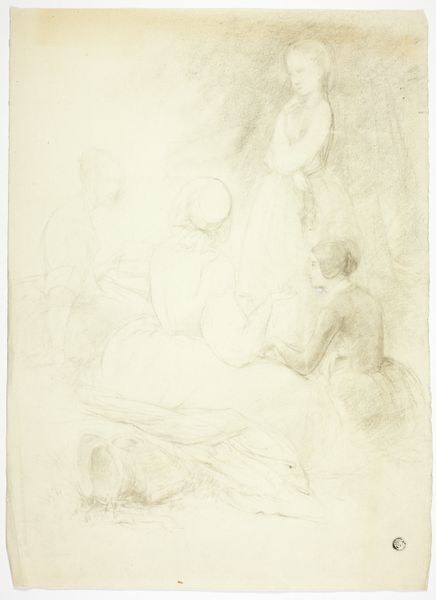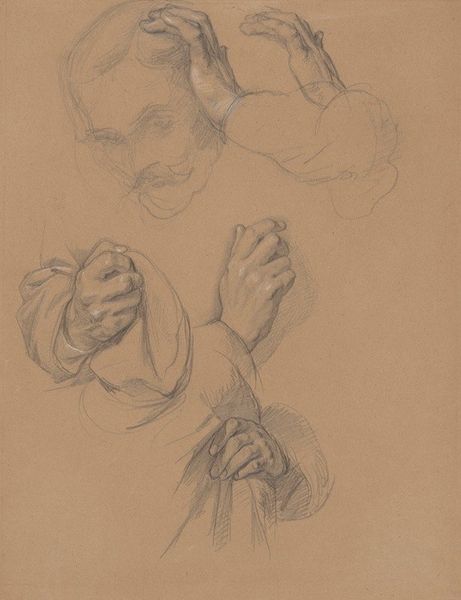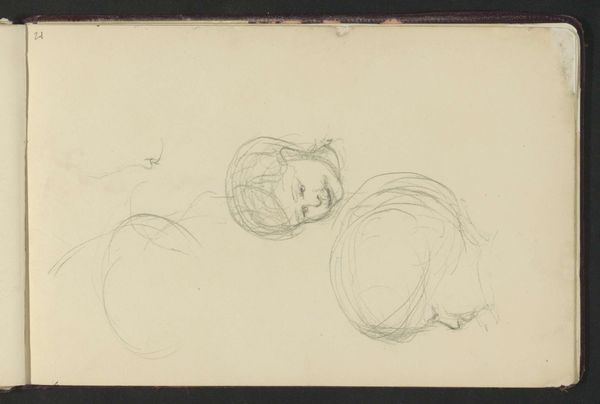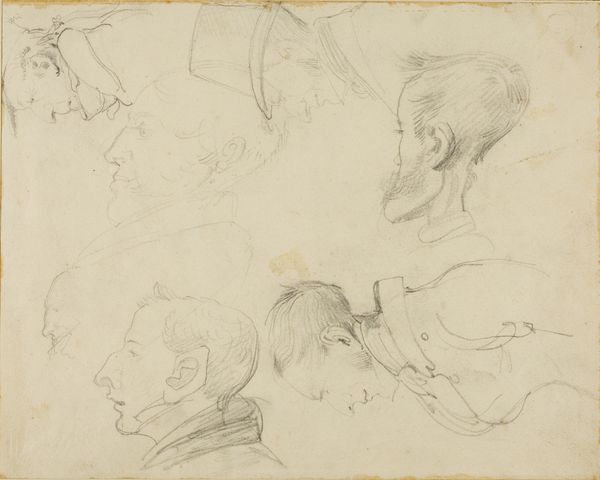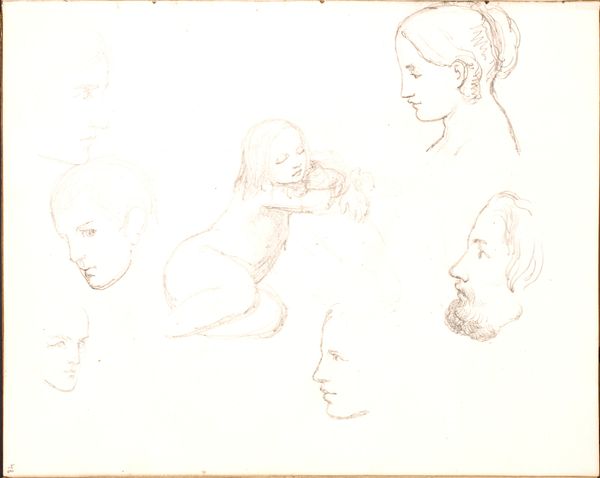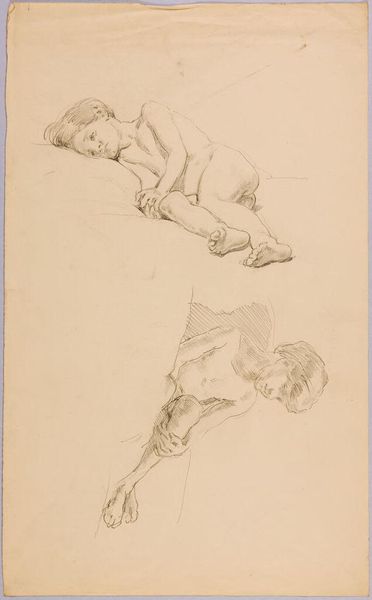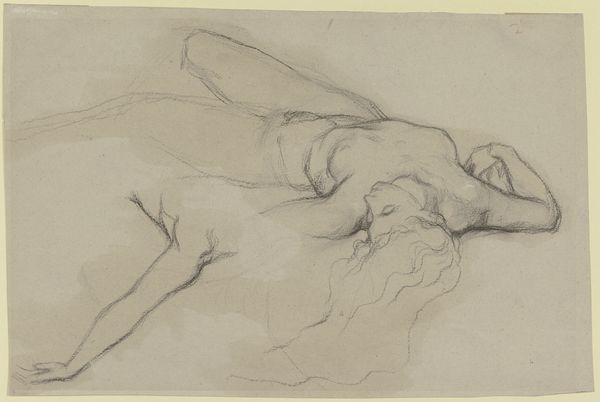
Sketches of Mother and Child c. 19th century
0:00
0:00
drawing, pencil
#
portrait
#
pencil drawn
#
drawing
#
amateur sketch
#
light pencil work
#
pencil sketch
#
incomplete sketchy
#
figuration
#
pencil drawing
#
detailed observational sketch
#
pencil
#
france
#
portrait drawing
#
pencil work
#
academic-art
#
initial sketch
Dimensions: 11 7/16 x 7 in. (29.05 x 17.78 cm)
Copyright: Public Domain
François-Claudius Compte-Calix made these Sketches of Mother and Child using graphite on paper. We can see his interest in capturing intimate, domestic moments. These scenes reflect a broader cultural fascination in 19th-century France, where new ideas about family and childhood were emerging, which came about with industrialization and urbanization. Motherhood was celebrated as a symbol of national identity and moral virtue. Artists began to challenge the established academic norms, seeking authenticity in everyday life rather than lofty historical subjects. Here, the soft lines and delicate shading create a sense of tenderness and vulnerability. It’s worth noting that the institutionalization of art education was growing, which meant it was crucial to master the human form. By examining archival materials like letters, exhibition reviews, and academic treatises, we gain insights into the social and institutional contexts that shaped the production and reception of art. Art history is not just about aesthetics; it's about understanding the complex interplay between art and society.
Comments
No comments
Be the first to comment and join the conversation on the ultimate creative platform.

